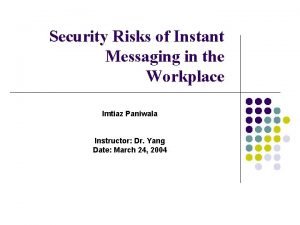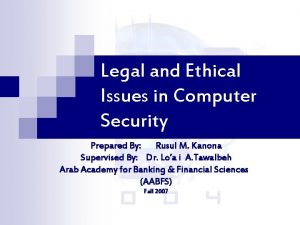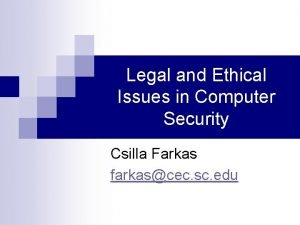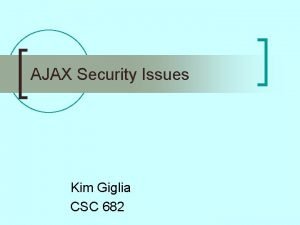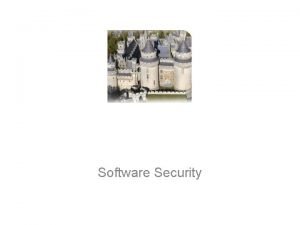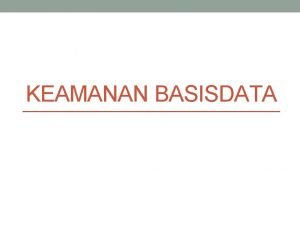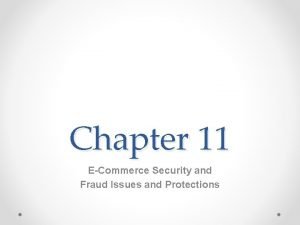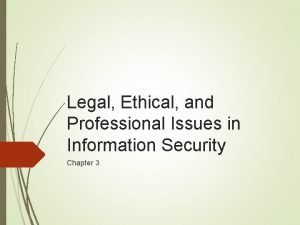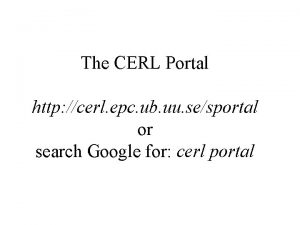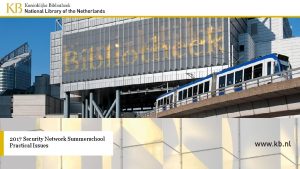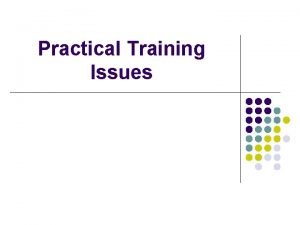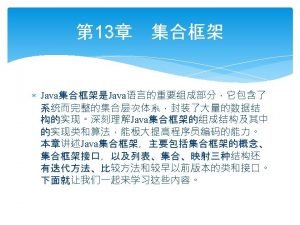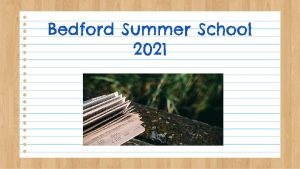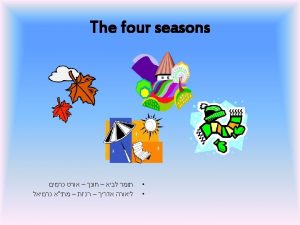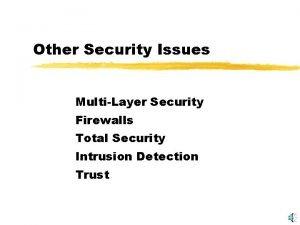Practical issues CERL Collection Security Summer School 7





















- Slides: 21

Practical issues CERL Collection Security Summer School 7 September 2017

What is our ‘raison d’être’?

What is our ‘raison d’être’? • To keep • To make available • Conflicting interests

So what to do next? • Can we avoid it? No, not entirely • Question is: what are the risks? • And what can we do to manage them?

Profiling crooks • In the Reading Room – Deviant behaviour • Staff – Who is the internal thief?

Profile • Cleaning or security staff? • Long working relation with the institution (10 to 30 years or more) • Well respected, trusted and with an independent position in the institution • Responsible for acquisition, and possibly also for registration and description • Unlimited access to the collection • Often national and international well respected specialists • Often with an important social role (in unions or professional community) • The people you less expect to do so • Hardly ever introvert with few contacts in the institution, but charming, with many contacts and open communicating • Other possible aspects:

Profile • Expensive lifestyle (sports cars, luxury clothing) • Vain (hair implant, lying about age to girlfriend) • Debts (betting) and addiction • Frustated career prospects • Be aware of change of behaviour!

Staff responsibilities • • Who is responsible for what? Who controls who? On what criteria are these decisions based? Is any risk assessment involved?

Readers (Q 36 -38) Readers are required to provide documentary proof of their identity and address, and have their photograph taken, before using your collection Readers may only access your collection if they undertake to comply with your Reading Room rules and regulations 120. 00% 100. 00% 80. 00% 60. 00% 40. 00% 20. 00% 60. 00% 50. 00% Responses 40. 00% 30. 00% Responses 20. 00% Yes No 10. 00% In part 0. 00% You permanently retain information on the name, address and (where appropriate) institutional affiliation of every Reader, and a photograph of every Reader 60. 00% 40. 00% Responses 20. 00% Yes No In part

Reading Room (Q 39 -40, 42 -46) Readers are not permitted to bring coats or large bags into your Reading Room, nor any object that might harm the collection (knives, blades, food, drink) 100. 00% 80. 00% 60. 00% Readers' belongings are searched as they exit the Reading Room Responses 40. 00% 20. 00% 60. 00% Yes No In part 50. 00% 40. 00% 30. 00% Responses 20. 00% 10. 00% Yes No In part

Reading Room You limit the number of items that may be seen at any one time by Readers' use of highly valuable/vulnerable items is invigilated by staff 100. 00% 80. 00% 60. 00% 40. 00% 20. 00% 80. 00% 60. 00% Responses 40. 00% 20. 00% Yes No 0. 00% In part Yes Highly valuable/vulnerable collection items are inspected by staff before and after use 50. 00% 45. 00% 40. 00% 35. 00% 30. 00% 25. 00% 20. 00% 15. 00% 10. 00% 5. 00% 0. 00% Responses Yes No In part

Reading room procedures

Reading room • • • Special reading room for special collections? Supervision Access Procedures Readers’ behaviour – How are maps taken out of the book? – How are they taken out of the Reading Room?

KB Practice (Special Collections) Desk always double manned No coats, bags, etc. Maximum four items on the table All items checked before and after use Check weighed items every time reader leaves the room • Vulnerable categories weighed • • • – Small deviation tolerated: fixed criteria • Stick to the procedures

Conditions for effective checks • Clear procedures, followed by all colleagues – ‘last week your colleague said it was OK’ • Good exchange of information when changing shifts • Foliate loose leaves in folders • Good descriptions, for atlasses best on map level • Availability of digital copies will help as well

Reading Room • What topics should be covered in the Reading Room rules and regulations? How do you make them known? Who enforces them? • General topics not covered in the survey: how do you position staff in the Reading Room, where to place cameras (if any), use of laptops and cameras • What is the best place to search readers’ belongings? When leaving the reading room, leaving the building? Visual inspection? Electronic? What happens when the electronic gates go off? • Is there any difference between libraries and archives in this? • Are other methods of inspection available? • What tools are available for an assessment of collection vulnerabilities?

Tracking what readers borrow If legally permitted to do so, you permanently retain a record of collection use allowing you to identify the items used by each Reader, and to list all users of a particular item. 60. 00% 50. 00% 40. 00% 30. 00% Responses 20. 00% 10. 00% Yes No In part Not legally allowed to retain this information

Tanja de Boer • Warehouse management • Recording collections • How to mark individual items

Stacks (Q 31) You audit / check your collection in the stacks to provide assurance on its security 50. 00% 45. 00% 40. 00% 35. 00% 30. 00% 25. 00% Responses 20. 00% 15. 00% 10. 00% 5. 00% 0. 00% Yes No In part

Catalogue (Q 21, 22, 29, 41) You include copy specific information in the catalogue records You maintain catalogue records for your collection 60. 00% 120. 00% 50. 00% 100. 00% 40. 00% 80. 00% 30. 00% 60. 00% Responses 40. 00% Responses 20. 00% 10. 00% 20. 00% Yes No Yes In part You have measures in place to prevent unauthorised changes to your accession and catalogue records 70. 00% 60. 00% 50. 00% 40. 00% Responses 30. 00% 20. 00% 10. 00% Yes No In part You have agreed procedures for the use of uncatalogued items: this includes close invigilation by staff 50. 00% 45. 00% 40. 00% 35. 00% 30. 00% 25. 00% 20. 00% 15. 00% 10. 00% 5. 00% 0. 00% Responses Yes No In part

Specific copy information (Q 24 -26) You place ownership marks in your collection items You maintain information on distinguishing features in your collection (i. e. bindings, ownership stamps etc) 70. 00% 60. 00% 50. 00% 60. 00% 40. 00% 30. 00% Responses 20. 00% 10. 00% Yes No In part 0. 00% Yes You place shelf mark labels on your collection items where appropriate 60. 00% 50. 00% 40. 00% 30. 00% Responses 20. 00% 10. 00% Yes No In part
 Private secuirty
Private secuirty Module 1 lesson 1 family relationships
Module 1 lesson 1 family relationships Lodi unified summer school
Lodi unified summer school Crescenta valley high school summer school
Crescenta valley high school summer school Assignment in spanish
Assignment in spanish Landsat collection 1 vs collection 2
Landsat collection 1 vs collection 2 D/a 30 days
D/a 30 days Sip security issues
Sip security issues Instant messaging security issues
Instant messaging security issues State legal, ethical and professional aspects of security.
State legal, ethical and professional aspects of security. Legal and ethical issues in computer security
Legal and ethical issues in computer security Ethical issues in computer security
Ethical issues in computer security Ajax security issues
Ajax security issues Software security issues
Software security issues Basis data relasional membuat pengamanan pada tingkatan
Basis data relasional membuat pengamanan pada tingkatan Ecommerce security issues
Ecommerce security issues Legal and ethical issues in information security
Legal and ethical issues in information security Explain osi security architecture
Explain osi security architecture Guide to network security
Guide to network security Wireless security in cryptography
Wireless security in cryptography Explain about visa international security mode
Explain about visa international security mode Electronic mail security in network security
Electronic mail security in network security








